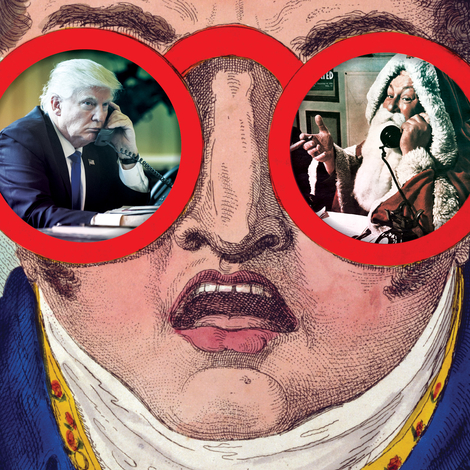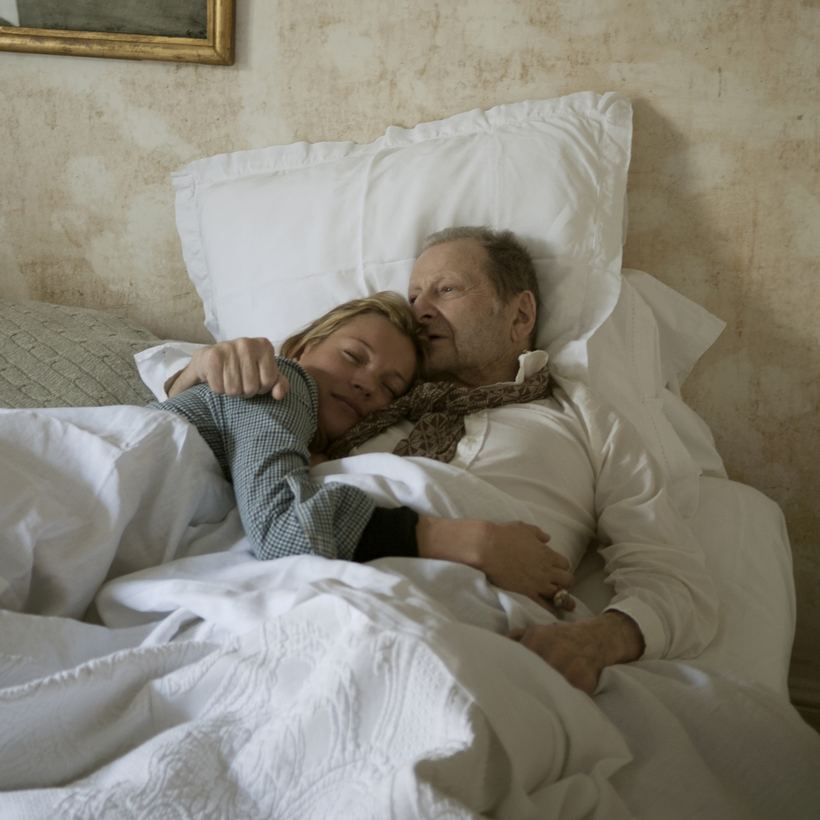Why do people make tremulous films about artists? It’s a question I was close to screaming when I exited James Lucas’s film of the brief encounter between the supermodel Kate Moss and the super-duper painter Lucian Freud in the coke-stoked naughty Noughties.
Moss & Freud is well short of being the worst example of this failed genre. The bar here is spectacularly low and this toe-curler has some way to go before it reaches the pits of Frida, Salma Hayek’s stupendously silly telling of the story of Frida Kahlo, or Pollock, Ed Harris’s pool of perspiration masquerading as a film about Jackson Pollock. This is too much of a short story to fall to such Hadean depths.
The action starts with one of those de rigueur contemporary claims that it was inspired by real events, then quickly deviates from them. Moss began sitting for Freud in 2002 in what was certainly an unexpected meeting of worlds. She was the seemingly ageless goddess of the waif look and ubiquitous party girl. He was the octogenarian genius whose paintings were ranked with those of the old masters and whose Pan-like appetite for young female flesh was the second thing people always knew about him.

The Lucas film is a précis of their encounter, the seemingly endless sittings that followed, the frissons between them and, finally, the damp denouement of the resulting painting. No, they don’t shag, although the implication is that Freud wanted to but Moss didn’t.
Since it’s essentially her side of the story — Moss is the executive producer — we can at least trust the film on those sorts of facts. Everything else feels more TikTok than Vasari.
We meet her in full out-of-control supermodel mode, driving drunkenly into the night in a sporty convertible, music blaring, eyes popping. The car careers off the road. But there’s a whole film to go, so she starts it up again and with another wild whoop sets off for her early morning meeting with Lucian.
He, meanwhile, is waiting for her at the National Gallery, where she eventually finds him — in the first of many late arrivals — standing in front of Titian’s Diana and Actaeon, a painting in which a doomed hunter is surrounded by a harem of naked Greek nymphs. Freud mumbles something deep about nudity and beauty and we know immediately that as sure as tits is tits Kate will end up modeling for him naked. And of course she does.
Derek Jacobi plays Freud as if he were a kindly uncle in one of those old Christmas films they show at lunchtimes. He’s stout and Shakespearean, whereas the Freud I met on a few wispy occasions was more alley cat than kindly bear — thin, wiry, wicked. Jacobi’s cod German accent rises and falls in intensity and at some point you expect it to break out into the full “Ve haf vays of making you talk.”
Ellie Bamber’s Moss is a better fit, although she veers occasionally into young Barbara Windsor from Dagenham. When I interviewed Moss for a documentary about the photographer Corinne Day, the inventor of the heroin-chic look and Moss’s original star-maker, what struck me was how ordinary she looked in real life and how a mysterious camera magic was involved in transforming her into a gripping beauty. Bamber is too conventionally pretty to need the angelic camera dust.
Moss was already pregnant by Jefferson Hack, the editor of Dazed & Confused magazine, when she arrived in Freud’s studio for the first time, with early suggestions of a belly. It prompted Freud to begin picturing her from the torso up so the rest of her could remain unchanged in the long sessions ahead. Those facts seem to have proved cinematically inconvenient, so here she gets pregnant later.

Because it is essentially her side of the story, we spend more time than we should at wild S&M parties in Berlin and keep flashing back to her days of teenage innocence and the first Corinne Day shoot on Camber Sands where she wore a feathered headdress and smiled so sweetly.
Freud, meanwhile, is reminded by her chain-smoking of his love for the socialite heiress Caroline Blackwood, his second wife. The elusive beauty of Moss rhymes with the elusive beauty of Blackwood and the old lusts start coursing up his shaky old body again.
Baked into the fabric of the artistic biopic — any artistic biopic — is the unbreakable truth that any attempt to mimic an artist’s art will look unconvincing. Lucas tries his best to minimize the damage by filming Freud’s work as obliquely as possible. But things go really wrong when the painting is finally finished and the fully pregnant Moss arrives to see it.
When the big denouement comes what gets revealed is a distant reproduction of Freud’s original. Any air the film had left in it comes seeping out.
Waldemar Januszczak is the chief art critic at The Sunday Times of London

